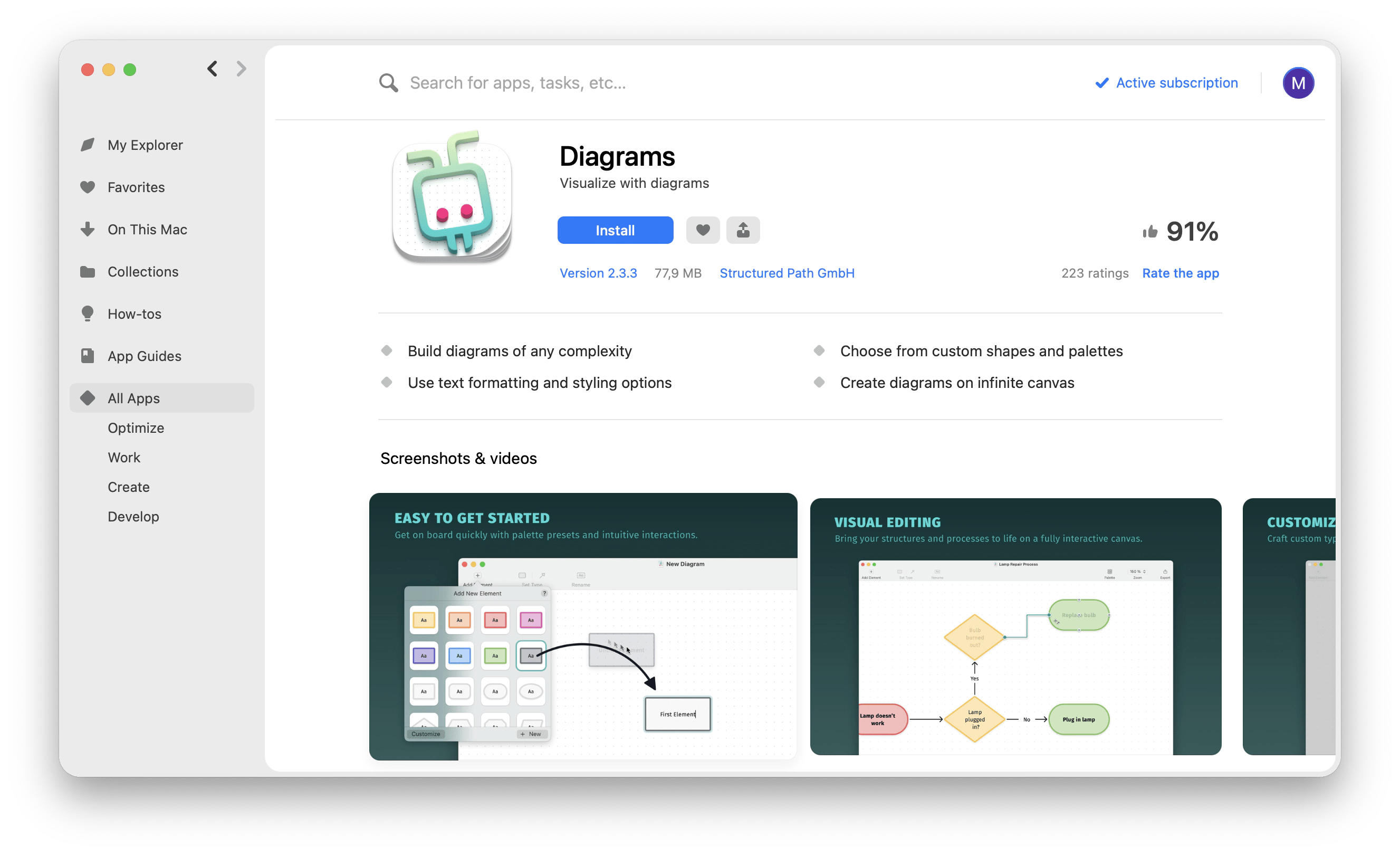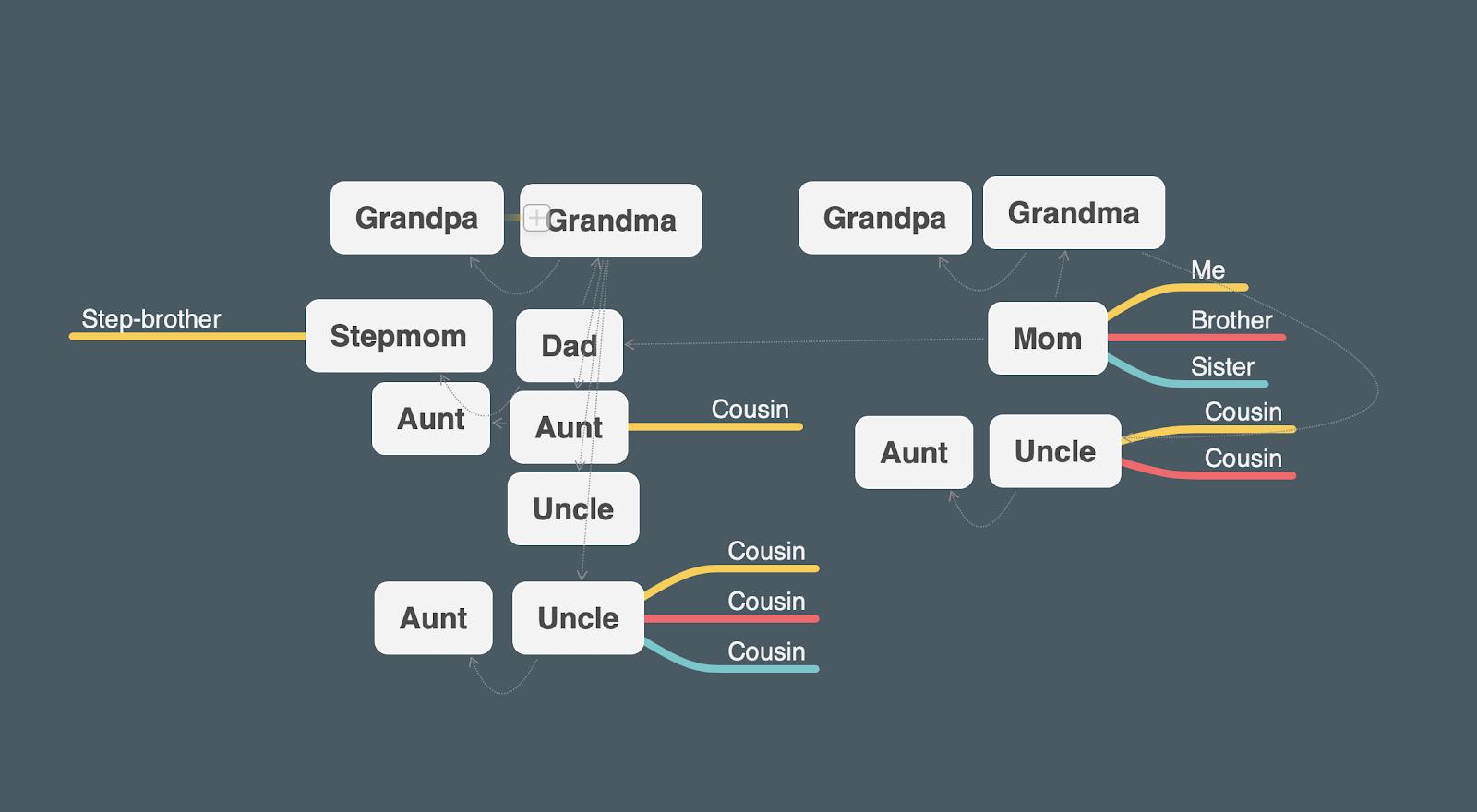Ways to create our own family tree
At some point, each of us has wondered where our family originated. Most will be able to get a word of mouth retelling from older generations, but there’s almost always a gap in the knowledge shared with us.
A family tree chart is a great way to document stories passed down through generations and solidify research on your family origins. Even if you’re not interested in a fancy family tree drawing, a simpler family tree diagram tucked away on your Mac can be a handy reference that’s shareable with others.
We’ll discuss how to make a family tree or genealogy chart, where you can begin researching your family history, and some excellent family tree maker apps and services you’ll want to utilize on your journey to retrace your family history.
Getting started
A great first step on your journey is to look at examples of family trees charts. Consider how large your family is, and how much larger you anticipate it could be when you’re done researching. Think of the intangibles, too; a parent may be adopted, and tracing their origins could open up a massive trove of relatives you didn’t know existed.
Start with what you know
Your visual guide should begin with the data you know. Parents, siblings, cousins, aunts, uncles, grandparents, and other family members should all be listed on your early draft chart. Remember to create a family tree that shows the generational growth; your parents should be above you, and their parents above them.
Leave plenty of room for new information, too. A parent could have siblings they’re not close with, for instance. If a long-lost uncle has many children, that’s a lot of real estate on your chart!
Consider how large you want the tree to be
You may want to go as far back as you possibly can – or limit it to your grandparent’s grandparents. There are no wrong answers. It’s possible the data you want isn’t available, as migration was often not well documented, so generations who may have left the ancestral home for new frontiers would present a gap in the research you can obtain.
Be mindful of relationships
Families can be complicated, and family tree diagrams are a wonderful way to trace the relationships and lineage without running through the mental gymnastics of recalling who is whose grand-whatever.
Generations are layers
Just because you are your parents favorite doesn’t mean you get priority position on the chart! All siblings and cousins of the same generation should be listed on the same line of the chart. Just as the family tree is shown like a tree in full bloom, generations should be thought of like rings in a tree’s trunk.
How to make a family tree
After you’ve got your bare bones research done, it’s time to start diagramming. A smart thing to do when starting your diagram is to create a key. In the example below, we’ve established a few general guidelines. First, males have icons with sharp lines, and females have icons with softer features.
Second, each generation has a specific color. We’ve also connected all relationships with double-arrows, and linked all parent-child relationships to the father.
These are all stylistic considerations, and none are the ‘right’ way to build a family tree. The benefit here is at a glance, you can quickly see both the generational and gender makeup of the family, and even how young current generations may be. We see only my ‘sister’ has children, suggesting the current generation is still fairly young.

What is the best program to create a family tree?
Online tools like Family Echo are available, but are often a bit simplistic. Many online tools require you to sign up for a service, or are constantly bombarding you with ads.
If you’re looking to create a more visually appealing chart, Diagrams is a great option. In fact, the chart above was made with Diagrams! The app is simple to use, easy to master, and can create charts as large or small as you need without having to go back and edit the generational requirements like Family Echo demands.

Diagrams relies on objects; in this case, family members. From there, you simply drag from one object to another to create relationships. You can choose from multiple colors, shapes, and relationship types like dotted lines and single arrows.
When you open Diagrams, choose “add element” from the top menu to select the color and shape of an object. After your selection is made, you can name the object, and drag it around in the app window to place it. All you have to do is continue adding objects and creating relationships between them, and you’ll have a family tree outlined in no time!
Remember when we said families can get a bit messy? If that sounds like your family, an app like MindNode may be just what you’re looking for. It’s a fairly straightforward mind mapping app that has a lot of great features for large, diverse family tree creation.MindNode keeps relationship lines in the background so you can focus on creating thorough family tree diagrams. In the example below, we see the user’s parents divorced at some point, and dad remarried. We’re also better able to show grandparents on both sides, and the tangible relationships are still available to view, but they’re not at the forefront.

We’re also able to show partners on one side of a family tree branch, and blood relatives of a parent on the other. Each of the branches – like the mother’s children – can also be collapsed, and each main object can house a picture of the person. If you prefer, you can choose from one of dozens of icons available for objects, too.
One thing we really like about MindNode is its ability to create to-do lists for each object. This makes it really handy for family trees still in progress. Here, we may want to add to-do list items to research one grandfather’s heritage, or a grandmother’s sister.
Conclusion
Keep in mind family trees are evolutionary. Even if you go back as far as possible, new generations are always arriving. Your own children, as well as nieces and nephews. Also remember that future generations will likely be as curious as you are about your family origins, so updating the family tree as new members make their way into the world is useful to future generations.
There is no one size fits all app for creating great family tree diagrams. As each family is unique, so are the needs of each user.
One of the three apps mentioned here today – XMind, Diagrams, and MindNode – will undoubtedly suit your needs. Best of all, you can try all three for free with a seven day trial of Setapp, a platform of 260+ incredible Mac, iPhone, iPad, and web apps. In your seven-day trial, you’re free to download and use as many as you like, all for free.
When the trial period ends, continued access to the entire Setapp suite is only $9.99 + tax per month – an incredible bargain for so many incredible apps!
So why wait any longer? Give Setapp a try today!






